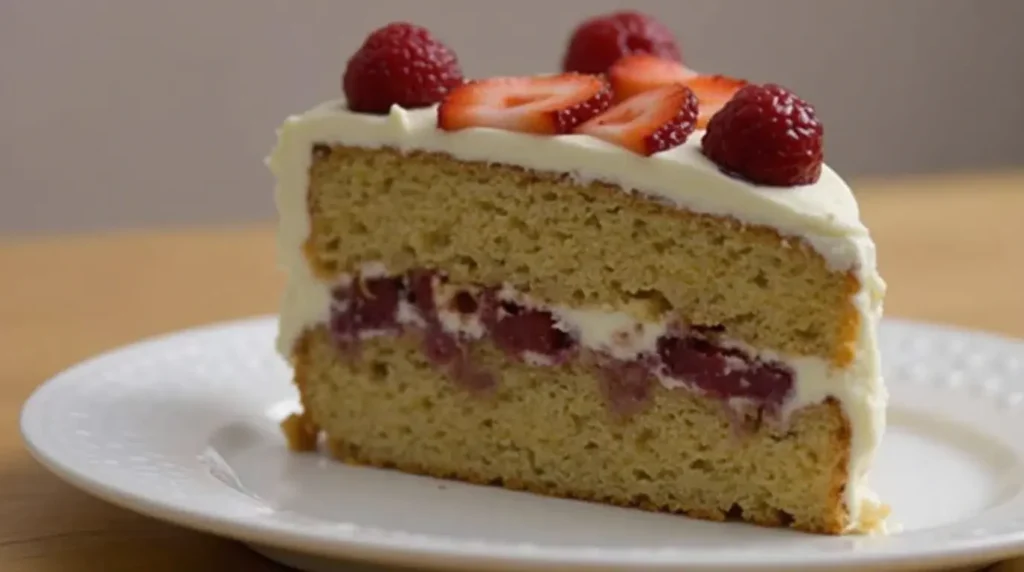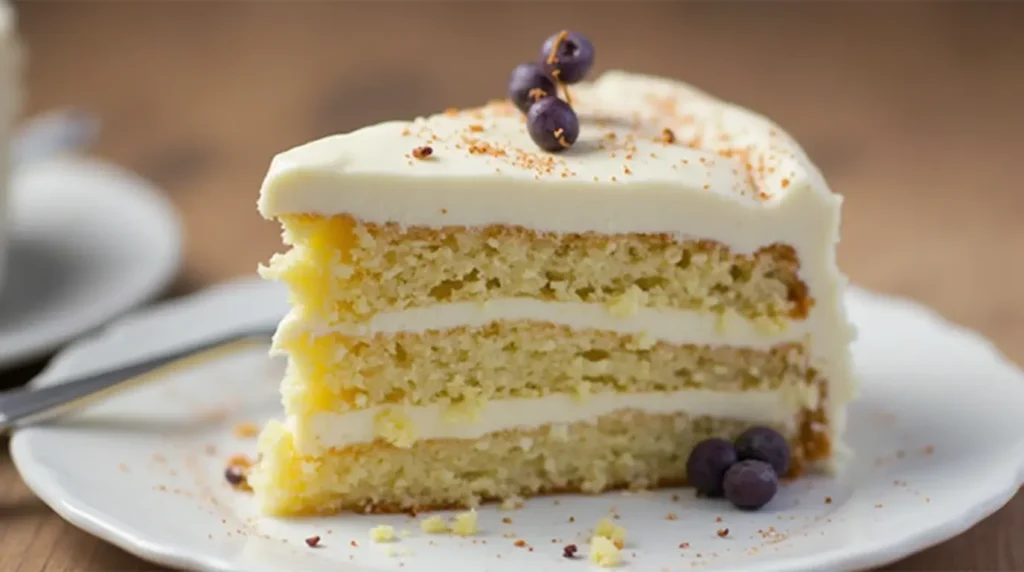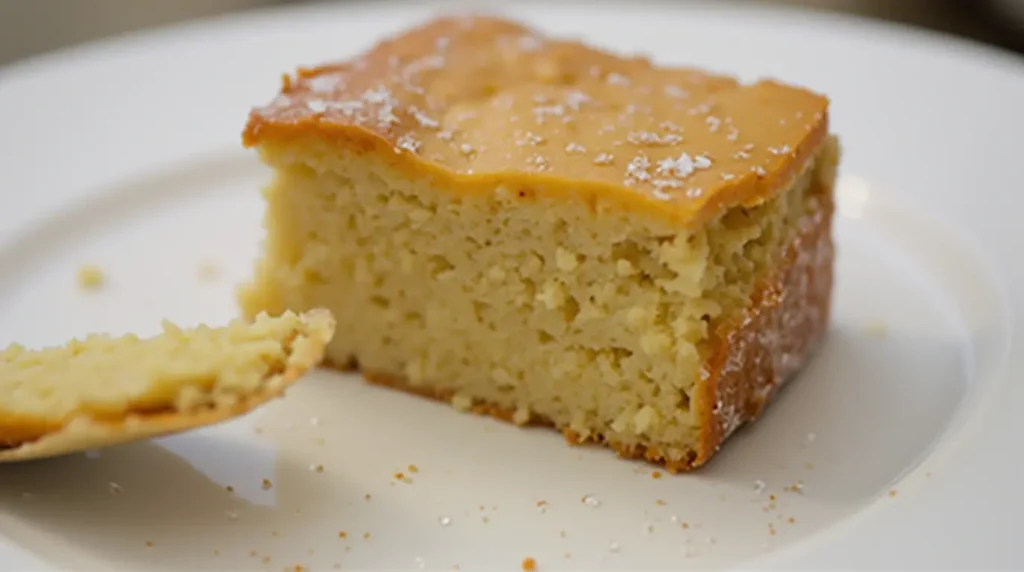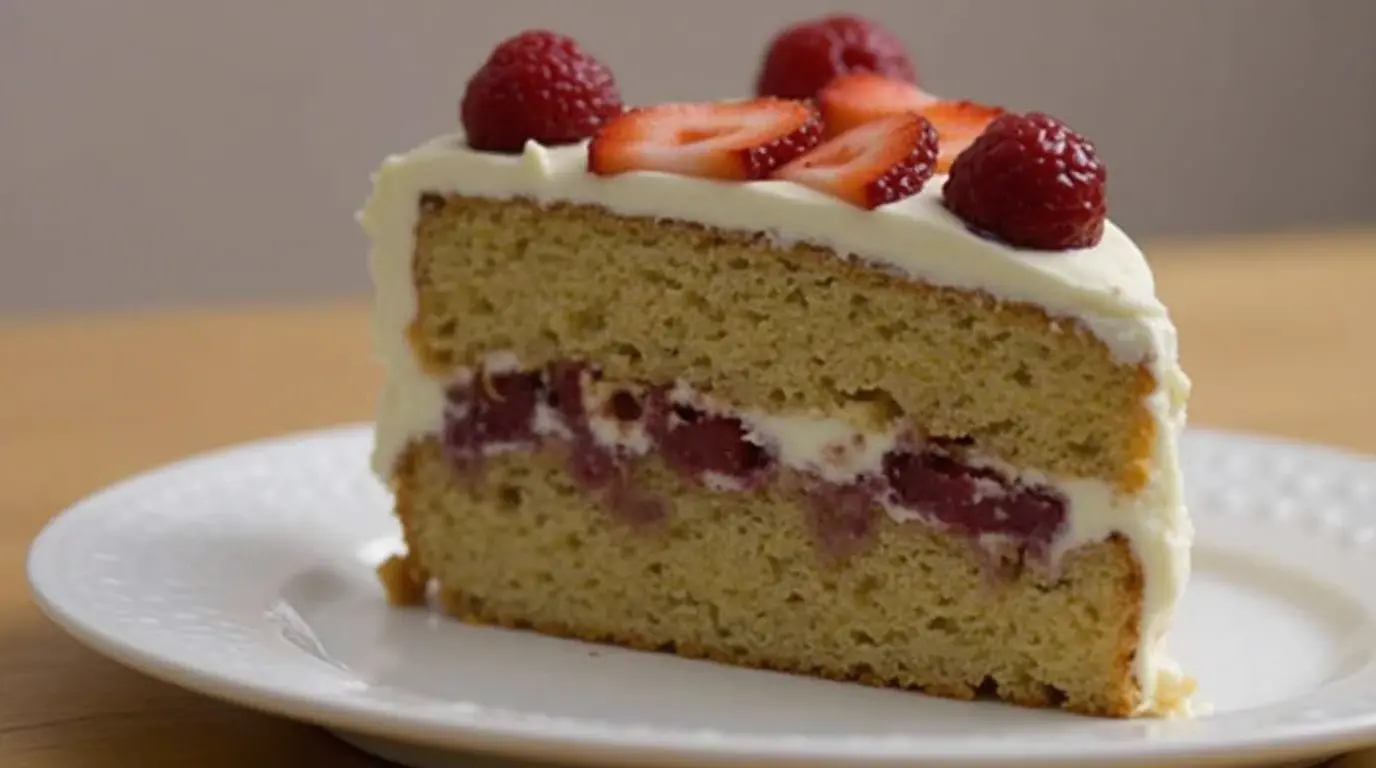Baking a cake is more than just mixing ingredients—it’s about creating something that brings joy and indulgence. If you’ve ever watched Gordon Ramsay expertly craft a dessert, you know that his cakes are not just visually stunning; they’re a blend of precision, technique, and the pure love of baking. But here’s the secret: with a little guidance, anyone can recreate these breathtaking cakes at home. In this article, we’ll walk you through Gordon Ramsay cake recipes and the techniques you need to craft beautiful, delicious cakes that will leave everyone in awe.

Table of Contents
Mastering Gordon Ramsay’s Cake Recipes
Baking isn’t just about mixing ingredients—it’s about understanding techniques, using high-quality ingredients, and refining your skills to achieve perfection. Gordon Ramsay, known for his precision and culinary excellence, applies the same level of expertise to his cake recipes. In this section, we’ll break down what makes his cakes unique, the essential tools you need, and the key ingredients that ensure a flawless bake every time.
What Makes Gordon Ramsay’s Cakes Unique?
Gordon Ramsay’s cakes stand out because of his meticulous attention to detail and his approach to balancing flavors and textures. Here are some key factors that make his cakes special:
High-Quality Ingredients
- Premium chocolate: Ramsay often uses high-cocoa dark chocolate for a rich, intense flavor.
- Fresh dairy products: Butter, eggs, and cream are always fresh and full-fat for better texture.
- Natural flavor enhancers: Instead of artificial flavors, Ramsay relies on vanilla beans, citrus zest, and spices.
Precision in Technique
- Temperature control: Every ingredient is at the right temperature before mixing.
- Proper mixing methods: Creaming butter and sugar properly for aeration, folding dry ingredients gently to avoid deflating batter.
- Baking science: Using the right leavening agents (baking powder vs. baking soda) to create the perfect rise.
Balanced Flavors & Textures
- Ramsay believes cakes should have a harmony of flavors—sweetness balanced with a slight acidity (e.g., lemon, berries) or bitterness (dark chocolate).
- Moist, fluffy interiors with a crisp or glossy exterior (e.g., caramelized sugar toppings, glazes).
Essential Baking Tools and Ingredients
Before you start baking like Gordon Ramsay, you need the right tools and ingredients. Let’s go through the must-haves for a successful bake.
Must-Have Baking Tools
Investing in quality baking tools can make a huge difference in your results. Here are the essentials:
| Tool | Purpose | Recommended Brand/Alternative |
|---|---|---|
| Stand Mixer | Speeds up mixing and creates a smooth batter | KitchenAid, Kenwood |
| Digital Scale | Ensures precise ingredient measurements | OXO, Escali |
| Cake Pans | Shapes the cake evenly for proper rising | Springform, Non-stick pans |
| Oven Thermometer | Ensures accurate baking temperature | ThermoPro |
| Piping Bags & Nozzles | Helps with decoration and professional finishing | Wilton, Ateco |
Key Ingredients for Perfect Cakes
The right ingredients are the foundation of a great cake. Here’s what you need and why each is important:
| Ingredient | Why It’s Important | Alternative/Substitute |
|---|---|---|
| Unsalted Butter | Adds richness and moisture | Coconut oil (vegan option) |
| Cake Flour | Creates a light and tender crumb | All-purpose flour + cornstarch |
| Eggs | Provides structure and stability | Flax eggs (vegan) |
| Dark Chocolate | Enhances depth of flavor | Cocoa powder + butter |
| Heavy Cream | Used in frostings and ganache | Coconut cream |
| Vanilla Bean or Extract | Adds natural sweetness and aroma | Almond extract, honey |

Pro Tips for Ingredient Selection
- Always use room temperature ingredients for smooth mixing.
- Sift dry ingredients (flour, cocoa powder) to avoid lumps.
- Use organic dairy products for a richer taste.
The Science Behind a Perfect Cake
Even with the best ingredients and tools, the way you combine and bake them determines success. Here are some key scientific principles behind Gordon Ramsay’s cakes:
Temperature Matters
- Cold eggs or butter can cause the batter to seize and create uneven textures.
- Too high an oven temperature leads to dry, cracked cakes; too low results in undercooked centers.
Mixing Techniques
- Creaming butter and sugar properly introduces air, leading to a fluffy texture.
- Overmixing the batter after adding flour can develop too much gluten, making the cake dense.
The Right Baking Time and Cooling
- Test with a toothpick—it should come out with a few moist crumbs, not wet batter.
- Allow cakes to cool in the pan for 10 minutes before transferring to a wire rack.
Mastering Cake Decoration Like Gordon Ramsay
Gordon Ramsay’s cakes aren’t just delicious—they look stunning. Follow these tips for professional-looking cakes:
Essential Cake Decorating Tools
- Offset spatula for smooth frosting application
- Bench scraper for sharp cake edges
- Piping bags with nozzles for intricate designs
Tips for a Show-Stopping Finish
- Use a crumb coat: A thin first layer of frosting locks in crumbs.
- Chill before final decorating: Cooled cakes are easier to frost smoothly.
- Add contrast: Garnish with edible flowers, berries, or chocolate shavings for a visual appeal.
Final Thoughts on Mastering Gordon Ramsay’s Cake Recipes
Mastering Gordon Ramsay’s cake recipes is about precision, patience, and creativity. With the right tools, ingredients, and techniques, you can bake stunning cakes that rival those of professional chefs. Now that you know the fundamentals, it’s time to start baking like a pro!
Gordon Ramsay’s Best Cake Recipes
Gordon Ramsay’s cake recipes are a blend of precision, high-quality ingredients, and professional techniques. Whether you crave a rich chocolate cake, a zesty lemon drizzle, or a creamy cheesecake, these recipes will help you bake like a pro.
Each recipe is crafted with Ramsay’s signature style—bold flavors, balanced sweetness, and a perfect texture. Let’s dive into some of his best cake recipes, complete with detailed instructions and expert tips to ensure flawless results.
Gordon Ramsay’s Classic Chocolate Cake 🍫
A rich, moist, and intensely chocolatey cake that’s perfect for any occasion. This recipe uses dark chocolate and high-quality cocoa for a deep, luxurious flavor.
Ingredients
| Ingredient | Quantity | Notes |
|---|---|---|
| Dark Chocolate (70%) | 200g | Use high-quality chocolate |
| Unsalted Butter | 100g | Room temperature |
| Sugar | 150g | Granulated or caster sugar |
| Eggs | 3 | Large, room temperature |
| Flour | 200g | Sifted for a lighter texture |
| Baking Powder | 1 tsp | Helps with rising |
| Cocoa Powder | 2 tbsp | Adds extra chocolate flavor |
| Milk | 100ml | Whole milk for richness |
| Vanilla Extract | 1 tsp | Optional but enhances flavor |
Instructions
- Preheat & Prepare
- Preheat the oven to 180°C (350°F).
- Grease and line an 8-inch round cake pan.
- Melt Chocolate & Butter
- In a heatproof bowl, melt the dark chocolate and butter over a double boiler (or microwave in short bursts).
- Stir until smooth and let it cool slightly.
- Mix Sugar & Eggs
- In a separate bowl, whisk sugar and eggs until pale and fluffy.
- Combine Dry & Wet Ingredients
- Sift together flour, cocoa powder, and baking powder.
- Gradually fold in the dry ingredients, alternating with milk.
- Add the melted chocolate mixture and gently mix until smooth.
- Bake
- Pour the batter into the prepared cake pan.
- Bake for 30-35 minutes, or until a toothpick inserted in the center comes out with a few moist crumbs.
- Cool & Serve
- Let the cake cool in the pan for 10 minutes before transferring to a wire rack.
- Optionally, dust with powdered sugar or drizzle with ganache.
Expert Tips
✔️ Use 70% or higher dark chocolate for a more intense flavor.
✔️ Don’t overmix the batter to keep the cake light and airy.
✔️ For an extra moist cake, brush with simple syrup before frosting.
Gordon Ramsay’s Signature Lemon Drizzle Cake 🍋
A light, citrusy sponge cake with a tangy lemon glaze—perfect for afternoon tea.
Ingredients
| Ingredient | Quantity | Notes |
|---|---|---|
| Unsalted Butter | 200g | Room temperature |
| Sugar | 200g | Caster sugar preferred |
| Eggs | 4 | Large, room temperature |
| Self-Raising Flour | 250g | Ensures a light texture |
| Lemons (zested & juiced) | 2 large | Fresh for best flavor |
| Baking Powder | 1 tsp | Helps with rise |
| Milk | 2 tbsp | Adds moisture |
For the Lemon Drizzle Glaze:
| Ingredient | Quantity |
|---|---|
| Powdered Sugar | 150g |
| Lemon Juice | 3 tbsp |
Instructions
- Preheat oven to 180°C (350°F) and line a loaf tin with parchment paper.
- Cream together butter and sugar until light and fluffy.
- Beat in eggs one at a time, ensuring they are fully incorporated.
- Sift in flour and baking powder, then fold gently.
- Add lemon zest and milk, stirring until smooth.
- Pour the batter into the loaf tin and bake for 40-45 minutes.
- Meanwhile, mix powdered sugar and lemon juice for the drizzle.
- Once baked, poke holes in the cake and pour the drizzle over while warm.
Expert Tips
✔️ Use fresh lemons for the best flavor.
✔️ Drizzle the glaze while the cake is still warm for better absorption.
Gordon Ramsay’s Ultimate Baked Cheesecake 🍰
A smooth, creamy cheesecake with a perfectly baked texture.
Ingredients
| Ingredient | Quantity | Notes |
|---|---|---|
| Cream Cheese | 500g | Full-fat for best texture |
| Sugar | 150g | Caster sugar |
| Eggs | 3 | Room temperature |
| Heavy Cream | 200ml | Adds richness |
| Vanilla Extract | 1 tsp | Enhances flavor |
| Lemon Zest | 1 tsp | Adds freshness |
| Digestive Biscuits | 200g | For the crust |
| Butter (melted) | 100g | Helps bind the crust |
Instructions
- Prepare the Crust
- Crush digestive biscuits and mix with melted butter.
- Press into a springform pan and refrigerate.
- Make the Cheesecake Filling
- Beat cream cheese and sugar until smooth.
- Add eggs one at a time, mixing gently.
- Fold in heavy cream, vanilla, and lemon zest.
- Bake
- Pour mixture over crust and smooth the top.
- Bake at 160°C (320°F) for 50-55 minutes.
- Cool & Serve
- Let cool at room temperature, then refrigerate for at least 4 hours.
Expert Tips
✔️ Bake using a water bath to prevent cracks.
✔️ Let the cheesecake cool slowly to avoid sinking.
✔️ Serve with fresh berries or caramel sauce for extra flavor.
Final Thoughts on Gordon Ramsay’s Cake Recipes
Gordon Ramsay’s cake recipes are the perfect balance of flavor, technique, and texture. Whether you’re a beginner or an experienced baker, these recipes will help you create stunning cakes with professional results.
Pro Tips for Creating Stunning Cakes
Creating a stunning cake isn’t just about following a recipe—it’s about mastering techniques and paying attention to the details that elevate your bake from good to extraordinary. Gordon Ramsay is known for his precision and commitment to quality, and by incorporating his pro tips into your baking routine, you can consistently create cakes that look and taste just as incredible.
Whether you’re a beginner or an experienced baker, these tips will help you troubleshoot common issues, refine your baking techniques, and perfect your cakes for a professional finish.
Perfect Your Mixing Techniques
The Importance of Creaming Butter and Sugar
One of the most fundamental steps in cake-making is creaming butter and sugar together. This process incorporates air into the batter, which helps create a light, fluffy cake.
- Tip: Use room temperature butter and caster sugar for the best results. Cold butter won’t cream properly, and granulated sugar can cause the batter to be grainy.
- Pro tip: Beat on medium speed for 4-5 minutes, until the mixture is light and fluffy, almost pale in color. This ensures the right amount of air is incorporated, helping the cake rise perfectly.
Don’t Overmix the Batter
Once you add dry ingredients to the wet ingredients, gentle folding is key. Overmixing the batter can cause gluten to develop, which results in a dense, heavy cake.
- Tip: Mix only until the dry ingredients are incorporated. If you’re making a butter cake, fold with a spatula or use a low speed on your mixer to prevent overmixing.
- Pro tip: Use a rubber spatula for folding, as it’s more effective than a spoon or whisk.
The Right Order for Adding Ingredients
Following the right order of adding ingredients ensures a smooth, well-mixed batter. Generally, you want to follow this order:
- Cream butter and sugar
- Add eggs one at a time, ensuring each is fully incorporated
- Sift dry ingredients together and fold them in gently, alternating with liquid (milk, juice, etc.)
- Pro tip: If you’re adding liquid, add it slowly and alternate with flour to keep the batter from curdling.
Temperature Control is Key
Preheat Your Oven
This might seem like a no-brainer, but it’s easy to forget. A properly preheated oven ensures your cake rises evenly. If your oven is too cold, the cake will take longer to bake and might collapse.
- Tip: Always preheat your oven for 10-15 minutes before placing your cake in.
- Pro tip: Use an oven thermometer to check for temperature accuracy. Most home ovens can be off by 10–15 degrees, which can make a significant difference in your bake.
Room Temperature Ingredients
As mentioned before, using room temperature ingredients is essential. Cold eggs, butter, and cream can cause the batter to seize or result in an uneven texture.
- Tip: Take eggs and butter out of the fridge 30 minutes to 1 hour before baking.
- Pro tip: If you’re short on time, warm the eggs in a bowl of warm water for 5-10 minutes to bring them to room temperature quickly.
Troubleshoot Common Baking Issues
Cakes Sinking in the Middle
If your cake sinks after baking, it’s often due to overmixing the batter, not baking long enough, or opening the oven door too early.
- Tip: Don’t open the oven door until the cake has set (usually around the 20-minute mark).
- Pro tip: If your cake sinks slightly after baking, you can cover the top with frosting or a layer of ganache to hide imperfections.

Dry Cakes
A dry cake is often a result of overbaking, too much flour, or not enough fat in the batter.
- Tip: Always test cakes with a toothpick—it should come out clean or with a few moist crumbs, but not wet batter.
- Pro tip: If you accidentally overbake, try soaking the cake with simple syrup (a mixture of sugar and water) or cover it with a moist filling to restore some moisture.
Creating Stunning Cake Decorations
Mastering the Crumb Coat
The crumb coat is the first layer of frosting that traps any loose crumbs, giving you a clean surface to apply the final layer of decoration.
- Tip: Apply a thin layer of frosting over the entire cake, then chill for 15-20 minutes to set the crumb coat.
- Pro tip: Use a turntable to make it easier to frost the cake evenly.
Using Piping Techniques for a Professional Finish
Piping can take your cake decoration from basic to beautiful. Mastering a few piping techniques will allow you to create elegant borders, flowers, and intricate details.
- Tip: Start with basic piping designs, like roses, rosettes, or shell borders.
- Pro tip: Always practice piping on a piece of parchment paper before decorating your cake. Piping bags with small round tips are perfect for detailing.
Garnishes and Edible Decorations
To elevate your cake’s appearance, add fresh or edible garnishes. From fresh berries and edible flowers to chocolate shards and gold leaf, garnishes can add the finishing touch that makes your cake truly stunning.
- Tip: When using fresh fruit, dry it off thoroughly to avoid excess moisture on the cake.
- Pro tip: Edible flowers should be pesticide-free, and fresh herbs like rosemary or lavender can add a lovely scent as well as visual appeal.
Advanced Techniques for Show-Stopping Cakes
Mirror Glaze
A mirror glaze gives your cake a glossy, smooth finish and is a perfect way to showcase your decorating skills.
- Tip: For a perfect mirror glaze, ensure your cake is frozen before applying the glaze to prevent it from melting.
- Pro tip: Gelatin and sweetened condensed milk are the key ingredients to a perfect mirror glaze. Keep the glaze at around 35°C (95°F) for the best result.
Sugar Flowers and Fondant
Sugar flowers and fondant decorations can transform a simple cake into a masterpiece. Making sugar flowers requires patience and precision, but the results are always stunning.
- Tip: Fondant can be used to cover cakes for a smooth, professional finish. Roll it out thinly to avoid overwhelming the cake with too much sweetness.
- Pro tip: Use a fondant smoother to remove any air bubbles and get a flawless finish. Sugar flowers can be made in advance and kept in a cool, dry place.
Final Thoughts on Pro Tips for Stunning Cakes
By mastering these pro tips for mixing, baking, troubleshooting, and decorating, you’ll be well on your way to creating cakes that are not only delicious but visually striking. Gordon Ramsay’s approach to cake-making is about perfecting the fundamentals and experimenting with new techniques—both of which you can easily incorporate into your own baking journey.
FAQs About Gordon Ramsay Cake Recipes
What is Gordon Ramsay’s secret to a moist cake?
- Using high-fat ingredients like butter and eggs
- Adding a touch of syrup or fruit puree for moisture
Can I make Gordon Ramsay’s cake recipes without eggs?
- Yes! Use applesauce, mashed banana, or yogurt as egg substitutes.
How can I decorate my cake like Gordon Ramsay?
- Use professional piping techniques and fresh fruit garnishes
Conclusion: Elevate Your Baking Skills with Gordon Ramsay’s Recipes
Baking is both a science and an art, and Gordon Ramsay’s cake recipes embody the perfect balance of technique, precision, and creativity. Whether you’re making a classic chocolate cake, a tangy lemon drizzle, or a creamy cheesecake, following Ramsay’s methods ensures that every bake is nothing short of perfection.
By implementing the pro tips covered in this guide—from mastering mixing techniques and temperature control to troubleshooting common baking issues—you’ll be well on your way to creating stunning, bakery-quality cakes in your own kitchen.
Why Gordon Ramsay’s Baking Methods Work
- ✅ Focus on High-Quality Ingredients – Fresh, high-quality ingredients elevate the flavor and texture of your cakes.
- ✅ Precision in Technique – Small details like properly creaming butter and sugar or folding ingredients gently make a huge difference.
- ✅ Expert Troubleshooting – Avoiding common baking mistakes ensures consistent results every time.
- ✅ Professional Presentation – Simple techniques like crumb coating, piping, and mirror glazing can transform an ordinary cake into a showstopper.
Ready to Take Your Baking to the Next Level?
Baking is a journey, and each cake you create is an opportunity to learn, experiment, and improve. Now that you have the secrets behind Gordon Ramsay’s cake recipes, it’s time to put them into practice!
💡 Try These Next Steps:
- 🍰 Experiment with flavors – Once you’ve mastered the basics, try new ingredients like exotic spices, fruit compotes, or liqueur-infused syrups.
- 🎂 Focus on decoration – Practice piping, fondant work, and edible garnishes to elevate your cakes visually.
- 🔪 Upgrade your baking tools – Investing in quality baking pans, a stand mixer, and a turntable can significantly improve your results.
- 📸 Share your creations – Show off your stunning cakes on social media, and don’t forget to tag your favorite bakers for inspiration!
Join the Community of Passionate Bakers
Baking is always more fun when shared with others! Whether you’re baking for a special occasion, as a creative outlet, or simply for the love of good food, you’re part of a worldwide community of passionate bakers.
📢 We’d love to hear from you!
- What’s your favorite Gordon Ramsay cake recipe?
- Have you tried any of the pro tips shared in this guide?
- Do you have your own secret baking hack?
Drop a comment below and let’s talk all things cake! 🍰✨
With these final insights, you’re fully equipped to elevate your baking skills and create cakes that are as stunning as they are delicious. Now, go preheat that oven and start baking like a pro! 🚀🔥

